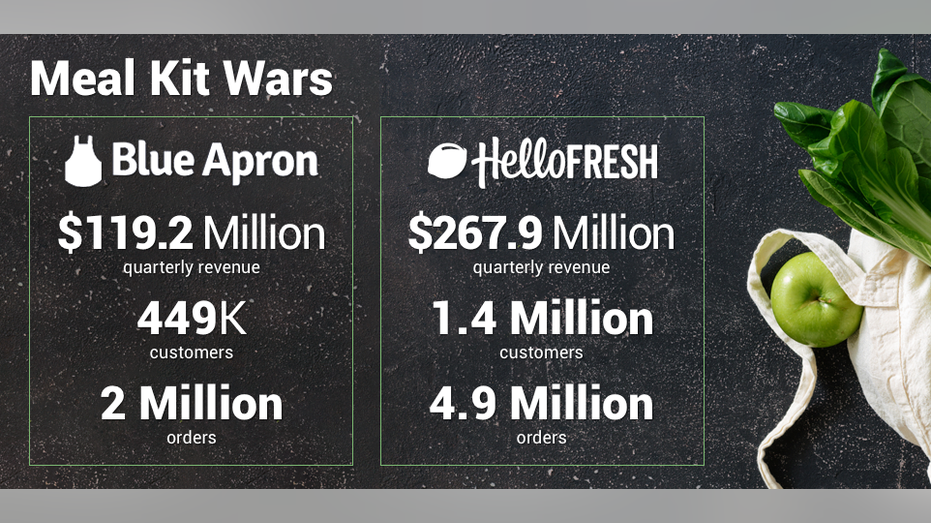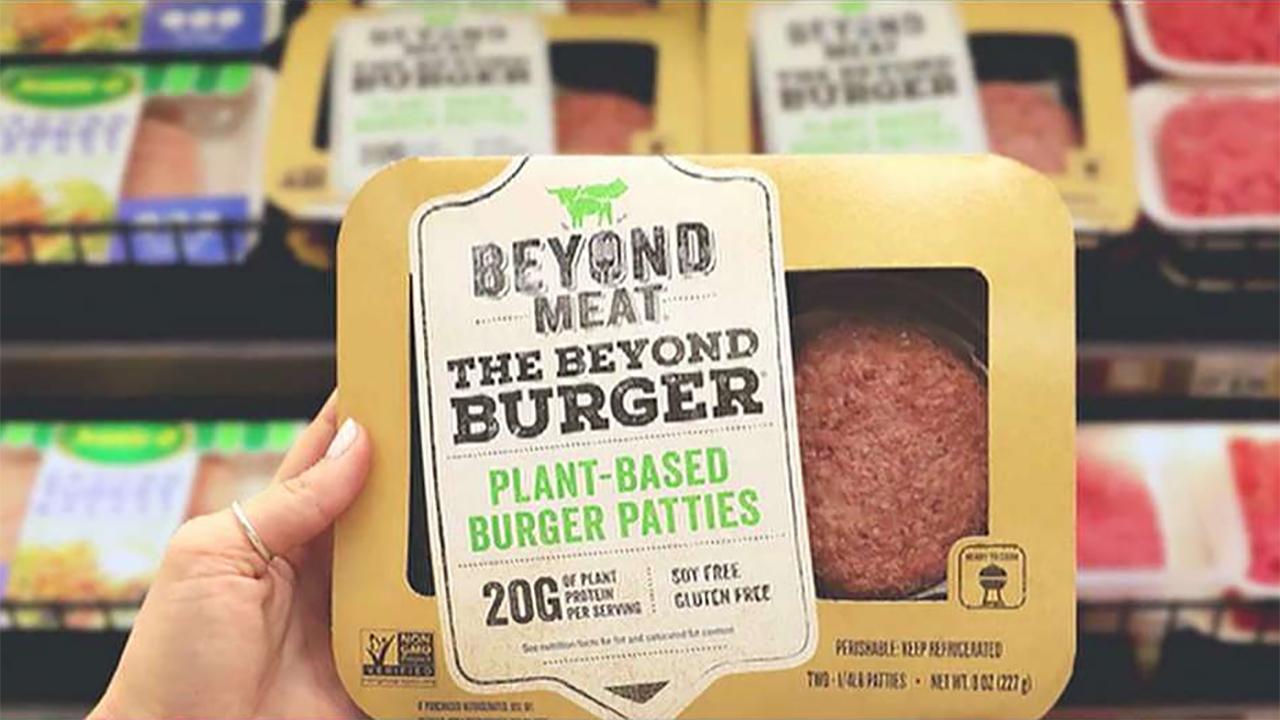Blue Apron's latest results hard to digest as customer base shrinks
Meal-kit service Blue Apron is struggling to retain its customer base and is facing increased heat from rising competition from within the industry.
The company has dropped to about 449,000 customers, down from 717,000 just a year ago, it said Tuesday. The company peaked at more than 1 million customers in early 2017.
The number of orders also dropped by close to 30 percent, to just over 2 million made in April through June, down from more than 3.1 million in the same period last year.
Blue Apron has struggled this year as its customer base and stock price both slumped. The company’s board approved a reverse stock split as its price dropped below $1, threatening it with being delisted from the New York Stock Exchange.
The company is also facing competition from a growing number of sources. The market is flooded with startup options like HelloFresh, Sun Basket, Freshly and others, meaning customers can pick a cheaper option or a more child-friendly option or a service with more vegetarian meals or one that gets higher reviews for quality. Marley Spoon partnered with Martha Stewart to offer her recipes with the needed ingredients.
While meal kit companies have relied on freebies and discounts to lure in new customers, many have struggled to retain them. Research from Second Measure shows just 12 percent of meal kit subscribers return after a year.
Not long after Blue Apron’s customer count peaked in 2017, warehouse issues reportedly caused customer satisfaction issues that led to people canceling their subscriptions.
In the meantime, HelloFresh has garnered positive reviews and managed to grow its customer base to 1.4 million people in the U.S. alone as of earlier this year. It has a four-star rating on Consumer Affairs (compared to just 2.5 stars for Blue Apron) and claims to have “the most five-star recipes.”

“HelloFresh has changed the way my husband and myself are eating now, in a positive way,” one Consumer Affairs reviewer glowed. “It literally has changed our lives!”
HelloFresh passed Blue Apron to claim the largest market share last year, Recode reported.
They’re also facing competition from bigger companies that have entered the meal kit delivery field.
Kroger, the largest supermarket chain in the U.S., offers delivery from more than 2,100 of its stores. It’s been selling meal kits from subsidiary Home Chef, both in-store and via delivery. The company has also been testing various options like oven-ready meals, “heat and eat” dishes and lunch kits.
Amazon has also gotten in on the meal delivery game. In addition to its acquisition of Whole Foods, the online retail giant has been selling groceries through its AmazonFresh service. AmazonFresh offers its own line of meal kits for delivery along with produce, meats, dairy and other standard supermarket fare.

Blue Apron’s leadership believes the company can grow again. During a presentation to investors Tuesday, they said Blue Apron’s $667.6 million revenue last year accounted for about 28 percent of the meal kit market. But they see online grocery shopping penetrating more households in the coming years, and believe Blue Apron is positioned to take advantage of that by expanding in some areas, better integrating into customers’ lives and scaling marketing.
The company has also looked at partnerships as a growth opportunity. It currently offers Weight Watchers-branded kits and has announced plans to add Beyond Meat products to some kits. It has also looked to partner with retailers for distribution, Digiday reported.
CLICK HERE TO GET THE FOX BUSINESS APP
Blue Apron CEO Linda Findley Kozlowski said the company has worked to optimize its operations.
“Now, we need to prove we need to prove we can grow our customer base and revenue through both better execution and new initiatives that enable our core business to reach its full potential,” she said. “Our market opportunity is large and we believe that it is growing, leading to significant unrealized opportunity within our core business once we execute our strategy.”




















